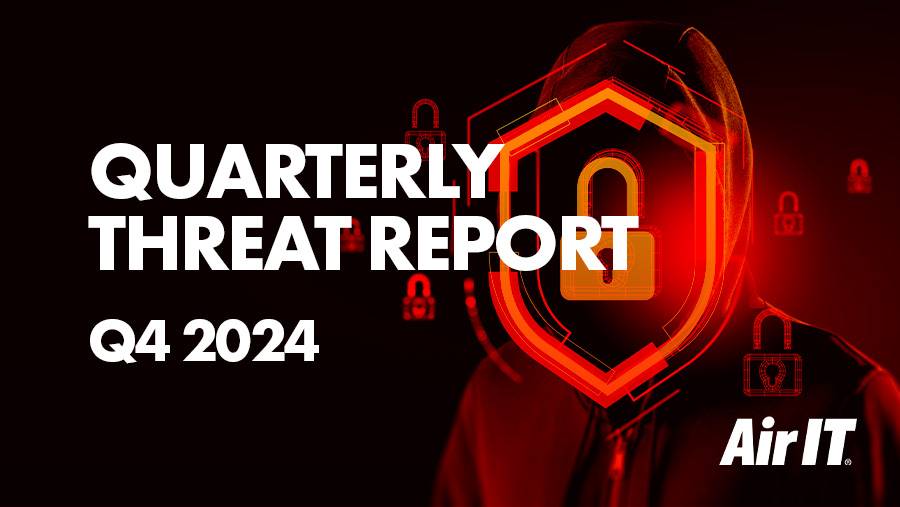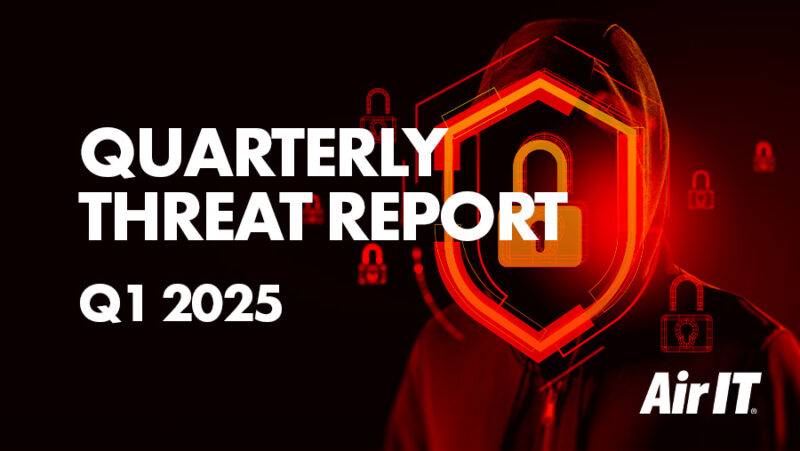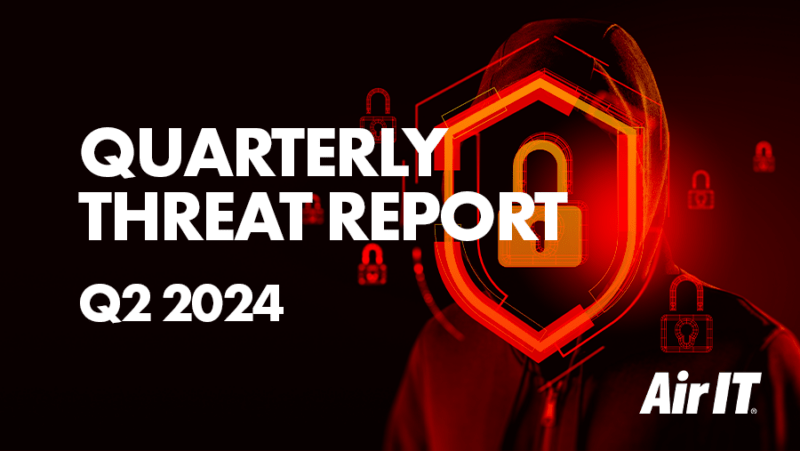During Q4 2024, the cyber security threat landscape continued to evolve, with new and sophisticated threats emerging. This report shows the main types of attacks found in the last quarter of 2024 and gives strategies to fight them effectively.

As we navigate through the digital age’s complexities, the cyber security landscape is always changing. Each quarter reveals new threats that challenge our defences and demand our vigilance. The last quarter of 2024 was no different, with a rise in sophisticated cyber attacks that tested the resilience of organisations worldwide. Discover the top threats that dominated Q3 2024.
Key threats in Q4 2024
- Ransomware attacks: Ransomware attacks have significantly increased, with malicious code targeting both large and small enterprises. Threat actors are using advanced encryption methods to lock critical data and demand hefty ransoms for decryption keys.
- Phishing scams: Phishing scams remain prevalent, with attackers employing more convincing and personalised tactics. These scams often use emails or messages that look like they come from trusted sources. They trick people into giving sensitive information.
- Zero-day exploits: Zero-day exploits have become more common, with attackers taking advantage of unknown vulnerabilities in software. These exploits pose particular danger because attackers can use them to breach systems before patches become available.
- Supply chain attacks: Supply chain attacks have become a major threat, where attackers infiltrate systems through third-party vendors or suppliers. This method allows them to bypass traditional security measures and gain access to sensitive data.
- IoT device vulnerabilities: The growth of the Internet of Things (IoT) devices has introduced new vulnerabilities. Many of these devices lack robust security features, making them easy targets for attackers to exploit.
- Cloud security risks: As organisations increasingly rely on cloud services, cloud security risks have become more pronounced. Misconfigurations, insecure APIs, and weak access controls are some problems that cause data breaches and unauthorised access.
What’s in the news?
This quarter, several significant cyber security incidents made headlines:
- October 2024: A major ransomware attack targeted a multinational corporation, encrypting critical data and demanding a ransom of $10 million. The company refused to pay, resulting in a prolonged operational disruption and significant financial losses.
- November 2024: A large-scale phishing campaign was uncovered, affecting thousands of users worldwide. Phishing emails pretended to be real messages from banks. They tricked people into giving away personal and financial information which led to a lot of identity theft and fraud.
- November 2024: A ransomware attack on Blue Yonder, third-party logistics provider, disrupted the supply chains of several major supermarket chains. The attack affected clients in the US and UK, including; Morrisons, Sainsbury’s, Starbucks, Procter & Gamble and Anheuser-Busch.
- December 2024: A zero-day exploit was discovered in a widely used software application, leading to multiple data breaches across various industries. The exploit targeted the Microsoft Windows Common Log File System (CLFS) driver and the Cleo file transfer software. Attackers leveraged the vulnerability to gain access to sensitive information before a patch could be released, highlighting the critical need for rapid response and patch management.
Key takeaways
- Implementing Multi-Factor Authentication (MFA): Multi-factor authentication adds an extra layer of security by requiring users to provide two or more verification factors. This significantly reduces the risk of unauthorised access, even if passwords are compromised.
- Conducting regular security audits: Regular security audits help identify vulnerabilities and weaknesses in systems. By conducting these audits, organisations can proactively address potential threats and ensure compliance with security standards.
- Deploying advanced threat detection systems: Advanced threat detection, like EDR, systems use artificial intelligence and machine learning to identify and respond to threats in real-time. These systems can detect unusual patterns and behaviours, enabling swift action to mitigate risks.
- Training employees on cyber security best practices: Employee training is crucial in preventing phishing scams and other social engineering attacks. Organisations should regularly educate their staff on recognising suspicious emails, avoiding risky behaviours, and reporting potential threats.
- Strengthening IoT security: To mitigate IoT vulnerabilities, organisations should implement strong security protocols for all connected devices. This includes regular firmware updates, secure configurations, and network segmentation to isolate IoT devices from critical systems.
- Enhancing cloud security measures: Organisations should adopt comprehensive cloud security measures, such as implementing strict access controls, and regularly monitoring cloud environments for suspicious activities.
The last quarter of 2024 has underscored the ever-evolving nature of cyber threats. By understanding the key threats and implementing effective mitigation strategies, organisations can better protect their assets and maintain robust cyber security defences. Proactive measures, continuous monitoring, and employee education are essential components in the fight against cybercrime.
Don’t be the next victim
We provide a free IT audit to help you build a strong foundation for future growth and success. Our audit uncovers any vulnerabilities or weaknesses in your infrastructure and ensures that your antivirus, threat management tools, and updates are up-to-date.
Don’t hesitate to get in touch for further assistance in improving your security posture.




